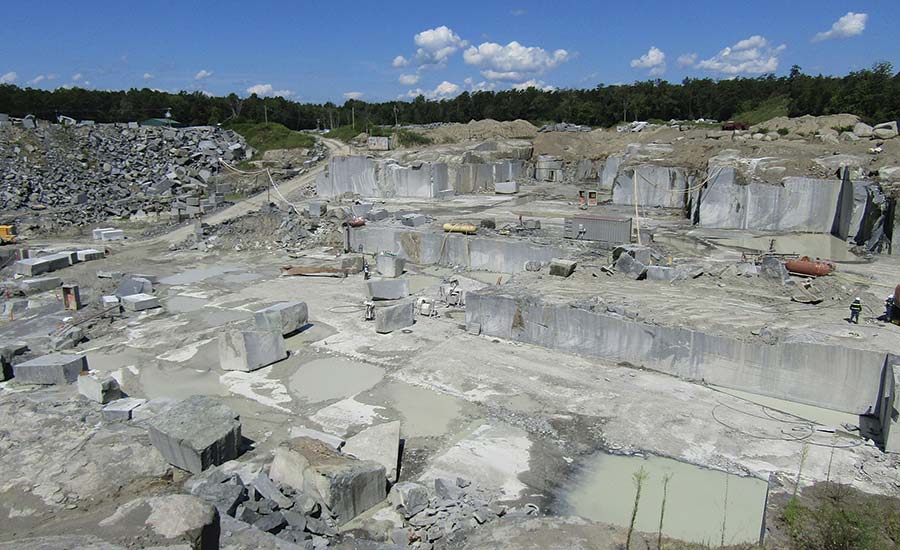Granite Quarries in South Africa Marvels: Checking Out the Quarry Landscape
Granite Quarries in South Africa Marvels: Checking Out the Quarry Landscape
Blog Article
Introducing the Mysteries of Granite Quarrying: Where Toughness and Beauty Meet
The globe of granite quarrying is a world where the raw strength of nature assembles with human virtuosity to develop structures that stand the test of time with an air of style. From the depths of quarries to the precise sprucing up in workshops, the process of changing granite right into building marvels is a complex dancing of practice and innovation. As we peer into the midsts of this old craft, we start to uncover the hidden complexities that shape the really significance of our built environment.
The Origins of Granite Quarrying
In the annals of architectural history, the origins of granite quarrying are shrouded in a tapestry of ancient workmanship and geological marvels. Dating back to ancient Egypt and Mesopotamia, the removal of granite from quarries noted the start of a trip that would at some point bring about the creation of some of the world's most renowned structures.
Granite quarrying's origins can be mapped to the experienced artisans who recognized the stone's resilience and aesthetic appeal. Through a combination of primitive tools and sheer resolution, these very early quarry employees discovered granite blocks that would end up being the foundation of worlds.
As worlds developed, so did the techniques of quarrying granite. The Romans, renowned for their engineering prowess, created sophisticated techniques for drawing out granite to create monuments, temples, and roadways that stood the examination of time.
The legacy of these old quarrying practices remains to shape contemporary architecture, with granite remaining a symbol of strength and beauty in building tasks around the world. (granite quarries in south africa)
Devices of the Quarrying Profession
The advancement of granite quarrying strategies from old worlds to modern-day times highlights the crucial duty played by the devices of the quarrying trade in forming the sector's practices. In old times, quarrying tools were fundamental, frequently including blades, hammers, and wedges made from products like bronze or iron. These tools required considerable manpower and time to remove granite blocks from quarries.

Furthermore, the introduction of pneumatic tools and high-powered machinery has significantly reduced the physical labor needed in quarrying operations, improving worker safety and productivity. As the quarrying industry remains to introduce, the devices of the trade remain at the forefront of driving progress and forming the future of granite removal.
Extracting Blocks of Granite
Utilizing accuracy equipment and advanced techniques, the removal of granite obstructs from quarries has become an innovative procedure in the contemporary quarrying industry. The initial action entails recognizing the place and size of the granite down payment to establish one of the most efficient removal technique. When a suitable website is chosen, the extraction procedure starts with the boring of openings for the positioning of nitroglycerins. Managed blasting strategies are then employed to damage apart the granite into convenient sections.

Sprucing Up and Ending Up Strategies
To achieve a remarkable surface area on granite blocks, competent artisans use a series of meticulous sprucing up and finishing methods. After the initial extraction and forming procedures, the granite blocks go through a comprehensive sprucing up phase to boost their all-natural elegance and longevity. One common technique used in brightening granite is ruby abrasion, where commercial rubies are used to grind and brighten the stone to a smooth finish. This process not just develops a shiny surface area but also guarantees uniformity in shade and texture throughout the granite block.
In addition to polishing, completing methods are pop over to these guys applied to further refine the granite's look. By meticulously choosing and applying these brightening and completing strategies, craftsmens can change raw granite obstructs right into charming items that showcase both strength and elegance.

Environmental Influence and Sustainability
With the growing focus on environmental awareness in the industry, granite quarrying methods are significantly inspected for their influence on natural resources and lasting sustainability. Quarrying for granite can have significant environmental effects. The extraction process usually involves making use of hefty machinery, dynamites, and huge amounts of water, resulting in environment devastation, soil erosion, and water contamination. In addition, the transportation of granite from quarries to processing centers creates carbon emissions, additionally adding to ecological degradation. granite quarries in south africa.
To alleviate these influences and ensure sustainability find out in granite quarrying, industry stakeholders are adopting various steps. Executing sophisticated innovations to minimize power consumption and water usage, recovering quarried land for ecological remediation, and advertising accountable sourcing methods are some techniques being used. Additionally, accreditations such as the Forest Stewardship Council (FSC) and the Management in Power and Environmental Layout (LEED) assistance consumers identify eco-friendly granite products.
Conclusion
To conclude, granite quarrying is a process that calls for specialized tools and techniques to essence blocks of granite and polish them to a high degree of finish. While the ecological impact of quarrying can be substantial, efforts are being made to boost sustainability techniques in the market. Overall, granite quarrying is a fragile balance between harnessing the toughness and elegance of this all-natural stone while lessening its impact on the atmosphere.
Report this page